In military history, new techniques, technologies and equipment have been devised on the basis of profit, political and industrial interests, and other such reasons. But from time to time, some military branch comes up with an answer to a specific problem. No budget concerns, no top brass industry executives seeking for a good slice of public money, no monkey busines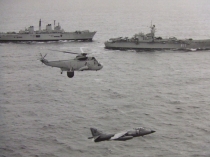 s. Just a simple answer to a simple problem.
s. Just a simple answer to a simple problem.
In our recent history, there is one which deserves tribute, at the very least, by all those escorts and fighters which have executed their assigned missions under the watchful attention of those who have maintained and manned this extraordinary asset. The one I´m referring to is no other than the Seaking SEARCHWATER MK-II.
Ptolomeus was adamant: the Earth is round. In those times (80 A.D.) this was quite a statement. He even tried to prove the fact in his Almagesto. This master piece of scientific testimony was lost, as was he after his discovery; he was promptly encarcerated. Some may laugh at this story but, even today, some navies seem to be unaware of the phenomenon of the Erath´s curvature. Simple calculations can show even an aviator (such as myself) that aircraft and missiles alike can approach any ship without allowing for the necessary time to engage it effectively. Further more, the possibility of extending the ship´s RADAR range beyond its horizon have been considered by many as superfluous. Even today, I assure you.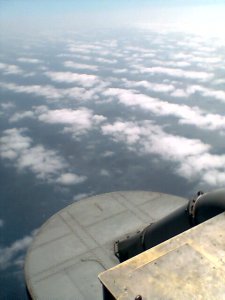
But the Royal Navy falls in a category of navies which, following the cultural tradition of fighting against the odds and overcoming them with success, learned that sending a formidable Task Force to the other side of the Globe to retake what was rightfully theirs, and have nobody to overlook proper air coverage and anti ship missile detection was an unforgivable flaw. God knows they overcame that problem in due course. The answer to this oversight was no other than the Seaking SEARCHWATER MK-II, which eventually served in the Spanish Armada alike and continues, today, to fight the odds in the battle field and in the offices (especially in the offices).
The Searchwater MK-II is a complicated system. The man-machine interface is far from friendly, and the use of ruler and pencil is still an important part of the kit. Only a few things are automatic, making it very difficult for anybody to qualify as an observer and be able to take fighters under control. It´s a harsh training environment, as temperatures at 10.000ft are frequently very low, and the helicopter´s heating system is very rarely switched on, as it masks other odors which are essential for the pilots and observers in the detection of possible malfunctions in the helicopter. Escapes routes are also a challenge; the port observer has a small window as an escape way, but the starboard observer has nothing to grab so as to avoid disorientation should they have to ditch. Both observers are located beneath the helicopters transmission, only to contribute to the already noisy environment. On top of it all, dials, switches, radar modes, etc, have to be activated one by one and always manually.
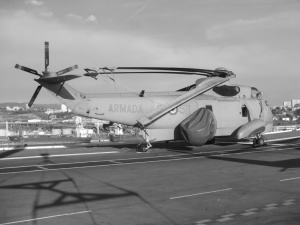 However, this is an environment in which cabin coordination reaches extraordinary levels; unlike other ASaC and AEW aircraft where up to 17 people are operating, in this particular case, all the information available to the system is available to both observers. Nothing is left out. Traditionally, they all come from units of the Fleet, so they all very well aware of all tactical procedures in surface and anti air warfare. In other words, they begin their training as observers after being tactical officers on board escorts, aircraft carriers or amphibious ships. They are aware not only of tactical procedures in the air environment but also in the naval one (nowadays it should be the same, something some navies should do well to keep in mind) and, since very recently, the amphibious ones as well. As an example of one of the difficulties they have to overcome, there is the question of language; to an infantry man the word “contact” refers to the location of a friendly or non-friendly unit. But in the navy world, contact is a RADAR or SONAR “blip” or a visual object. Observers have to “translate” this into the proper context depending on who is on the other side of the radio.
However, this is an environment in which cabin coordination reaches extraordinary levels; unlike other ASaC and AEW aircraft where up to 17 people are operating, in this particular case, all the information available to the system is available to both observers. Nothing is left out. Traditionally, they all come from units of the Fleet, so they all very well aware of all tactical procedures in surface and anti air warfare. In other words, they begin their training as observers after being tactical officers on board escorts, aircraft carriers or amphibious ships. They are aware not only of tactical procedures in the air environment but also in the naval one (nowadays it should be the same, something some navies should do well to keep in mind) and, since very recently, the amphibious ones as well. As an example of one of the difficulties they have to overcome, there is the question of language; to an infantry man the word “contact” refers to the location of a friendly or non-friendly unit. But in the navy world, contact is a RADAR or SONAR “blip” or a visual object. Observers have to “translate” this into the proper context depending on who is on the other side of the radio.
The Searchwater continues to serve today in the Royal Navy and the Spanish Armada. In the first case, it has evolved into a much advanced ASaC system, having served in Afganistan and Irak, amongst other places, with extraordinary success. In the second, it has become the victim of its own success; for years Harriers have flown with the luxury of having “someone” to look over them. It became such a common thing to have the Searchwater airborne at all times that, eventually it has been forgotten. All the sudden, they seem to carry out operations not knowing that, budget permitting, sometimes there is a SHW with a watchful eye. Other times, there are none, and nobody seems to know/care. Pity.
Regardless of equipment, sensors and other such details, from Airborne Command we´d like to pay our tribute to those who have designed, maintained, flown and operated the Searchwater, under the ensign of the Armada or the Royal Navy and in every part of the world where they have cared to show themselves. A flying buddy of mine once said “once a Searchwater observer, always a Searchwater observer”
“Run, Hide…….I´m watching”
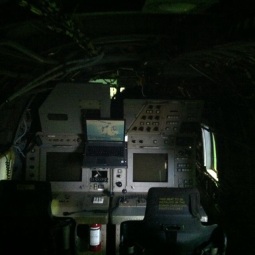
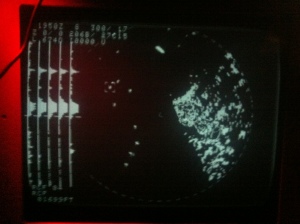
Juan: a very fitting tribute. I first flew a Mk2 AEW “Sea King Whiskey” in November 1984. That aircraft was XV714, side number Navy 88: I am still flying the same airframe some 30 years later, but now as a Mk7, ASaC variant. Having been an AEW Observer since 1984 I have served on 849 NAS, A Flt, B Flt and more recently on both 854 and 857. During those 30 years I served on all three UK carriers (Ark Royal, Illustrious and Invincible) in all parts of the world. I am still serving but now as a full time reservist as an Instructor on 849 NAS at RNAS Culdrose. The ASaC is a quantum leap over the old Mk 2; the HMI (man, machine interface) is now user friendly and intuitive: Link 16 is a world changer and secure comms make the job a little easier. Some things don’t change though: the Sea King airframe is still noisy and shakes and rumbles as it always did; the earth is still round ( this is still a myth to the fish heads on the Type 45 destroyers). The ASaC will go out of service in early 2018, followed by a capability gap no doubt. My flying time comes to an end in December 2014. I will miss the Sea King: it’s been so much fun!
Lt Cdr Richard “Dicky” Lewis QVRM MCGI Royal Navy
LikeLike
Sir,
I do appreciate you taking the time to drop this humble officer a line. It´s always great to hear from a fellow bagger and know a little bit of their experiences. In my more modest case, I´m sadly the very last senior observer in the Armada; there are only two of us left in active duty and no more people will be trained for the job. In the next several months we shall be deployed to Somalia for a 6 month period after which the unit will be decommisioned for good. Since 1987, our three MK-II´s have worked like a charm, looking over the fleet and the fleet air arm (which I still think should be the same thing!). Unfortunately, having Aegis destroyers has clouded our characteristic Spanish volatile minds and don´t seem to find it necessary to keep this capability going. Like the good Samuel Coleridge once said, “If men could learn from history, what lessons it might teach us!. But passion and party blind our eyes, and the light which experience gives us is a lantern on the stern, which shines only the waves behind us”.
A wise man, no doubt. I hope, Sir, that you continue to enjoy the flying time you have left until December and wish you a very successful future. Thank you very much for your time.
I am Sir, your most humble servant,
Lt Juan Del Pozo Berenguer
5th Sqdrn-ARMADA
LikeLike